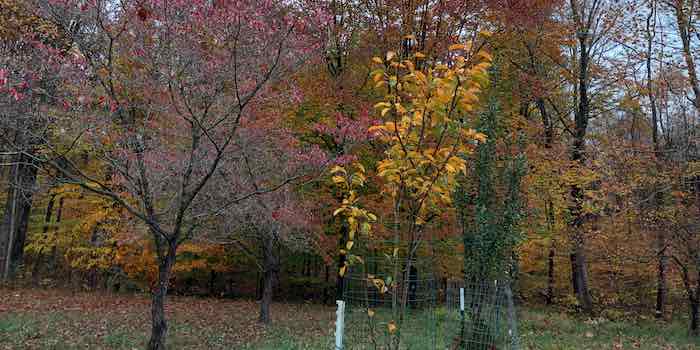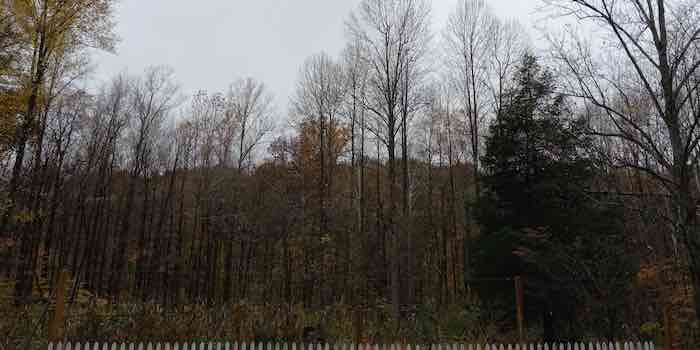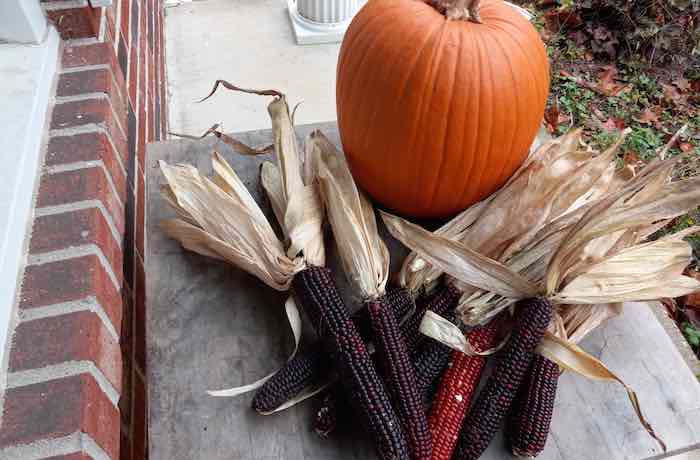By Dr. Bruce Smith ——Bio and Archives--October 30, 2023
HeartlandLifestyles | CFP Comments | Reader Friendly | Subscribe | Email Us

It has been a quiet week along the old National Road here in the Heartland. It was the peak of color for this year. It recently looked like it might be a rather unremarkable leaf season, but after the sugar maples went to yellow-orange-red the ridge lines came alive with the bright yellows of the tulip poplars and hickories. By Wednesday there were more turning trees than green ones. On Friday morning only the pines and junipers and cedars were still all green.
Saturday was glorious. We went out just at first light to go to breakfast at a little diner right on the National Road, something we don’t do often. Afterward we went north just a few miles to look at a splendid herd of dairy cows happy on their rich green pasture. On the way back we went past a waterfall and a scarlet covered bridge tucked in among glowing golden leaves. Our trip made for a late lunch at home, then pleasant work in the afternoon in anticipation of the cold coming early next week. The wind kicked up here and there and the leaf blower helped clear fallen leaves that would make little runoff dams along the driveway.

The weather radar told of rain on the way overnight, and maybe quite a bit of it. More squash and corn came in from the garden, this time with more urgency. Spinach has begun to sprout, but the leaves have fallen to begin protecting it from the frost that is to come. Livestock got some extra TLC as dark approached. Is there enough firewood by the door? I had put off feeding the birds for most of the summer, but with the cold coming, it seemed a good time to work on the bird feeding station. I took out mixed seed for the platform, plenty of sunflower seeds for three different feeders, and suet cakes to attract the woodpeckers, large and small. By then it was nearly dark.
Around 8:30 PM, the first sprinkles began. I opened a window a foot or more so as to hear the rain. With cold coming behind the rain, it might be the last opportunity of the season to have a window open during the dark hours. Gentle rain fell almost all night. Only once did I wake up without the comforting sound.

Sunday morning the rain continued until almost light. The bird feeder station remained abandoned. Damp and chilly, it was definitely a morning for a fire in the stove. Firewood prep began in May this year, so in the stove a fire quickly grew, crackling around twigs and pine cones before reaching the larger sticks. Creamy ash and yellow mulberry chunks began to turn black and then burn merrily. Time for coffee and tea, and time to greet the morning with blinky eyes.
By the time I walked out to check the driveway for possible erosion, the drizzle had stopped. Preparations had been successful. No little gullies were to be seen. Then I looked up in the half light. Yesterday there were almost no bare branches to be seen. Now only a few treetops high up had leaves. In the undercover, the beeches and hornbeams were still green and gold, but the carmine reds and grays of the dogwoods had only a gallant third of their leaves remaining. The rain had soaked the leaves and made them droopy. The sound of the rain covered the hiss of the falling leaves on their descent to the ground.
Support Canada Free Press


Green grass hid beneath a solid cover of every kind of tree leaf in the woods. The rugosa roses seemed surprised, too. They seemed to inquire, “What happened?” A few last blushing rose hips sat bewildered atop the branches, the last rose of summer now gone.
The morning proceeded with a foray into the crosswords, then a classic western film. About noon I sat down to begin this column when I thought I saw movement out of the corner of my eye. On the little wooden deck, with the black-eyed Susan vines still thick with blooms and the few remaining wave petunias still offering vibrant pink, something moved under the settee, then hopped out into the gray light. To my delight, the first snowbird has arrived! For an hour or more, there was only one, a female, but then a little after 1 PM, two more showed up, both males. They searched and then searched again for seeds or unwary bugs, hopping busily, always on or near the ground.

Soon other birds began to show, titmice and chickadees, blue jays and downy woodpeckers. When the word spreads, the rest will arrive, hoping to consume it all before the squirrels can begin their gluttony.
So it has been the transition fall weekend, breezy and not too warm with glorious color. The big change came with the rain in the night. Tomorrow the killing frost will arrive with its snap in the air, bringing the dull hues and bare branches of winter, still seven weeks away.
Let it come. The snowbirds have made it safely and we will feed them well for their journey back to the True North when April comes around.
View Comments
Dr. Bruce Smith (Inkwell, Hearth and Plow) is a retired professor of history and a lifelong observer of politics and world events. He holds degrees from Indiana University and the University of Notre Dame. In addition to writing, he works as a caretaker and handyman. His non-fiction book The War Comes to Plum Street, about daily life in the 1930s and during World War II, may be ordered from Indiana University Press.